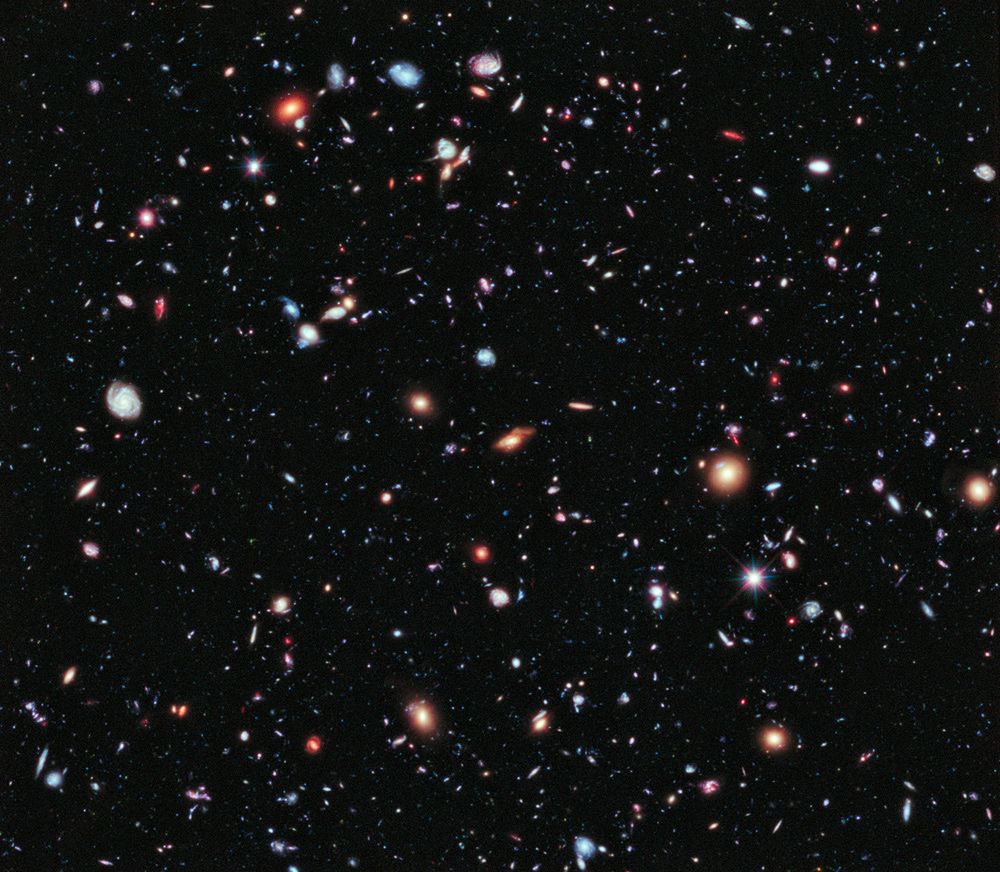Hubble Telescope to Snap 6 New 'Deep Field' Views of Universe

The Hubble Space Telescope's iconic "Deep Field" photo wowed the world in 1996 by revealing a huge collection of galaxies hiding inside a patch of the sky that looked like nothing more than blank space. Now NASA plans to image six more "empty" bits of sky for a whole new set of deep fields that could revolutionize astronomy once again.
Hubble captured the Deep Field by staring at the same point over many hours, letting particles of light from extremely distant objects slowly pile up to reveal celestial bodies that would otherwise be too faint to see.
Since the original photo's release, Hubble looked even longer at the same spot to create the "Ultra Deep Field" in 2004 and then the "eXtreme Deep Field" in 2012. But the new effort, called Hubble Frontier Fields, will be the first to try a similar technique on some new areas of the heavens. These photos won't go quite as deep as the Ultra Deep Field, but will represent some of the deepest images of the universe ever taken.
"As iconic as the Ultra Deep Field is, now we'll have six that are almost as nice," said Hubble scientist Dan Coe of the Space Telescope Science Institute in Baltimore, Md., which manages the telescope. [Hubble's Ultra Deep Field Revealed (Video)]
The Hubble Frontier Fields will collect light for about 45 hours each, spread over a period of three years, imaging objects that existed in the first 500 million years after the Big Bang.
Plus, in a new twist, astronomers will image each of the six blank patches of sky in combination with nearby galaxy clusters, whose gravity can act as a cosmic magnifying lens to zoom in on small, distant objects behind them.
Researchers will "observe six galaxy clusters and blank fields in parallel," Coe told SPACE.com. "While they're observing a cluster, the other camera is just far enough away where it's not really looking at the cluster anymore. It'll be essentially blank. To really go deep in both of these at the same time, that's never been done before."
Sign up for the Live Science daily newsletter now
Get the world’s most fascinating discoveries delivered straight to your inbox.
The added magnification boost of the clusters' gravity should make these pictures the deepest glimpses of the universe yet. The shots could capture galaxies that are older and farther away than anything ever seen before.
"Some of them will be among the most distant galaxies yet found," said Coe, who led the study of one of the current contenders for farthest galaxy ever seen, MACS0647-JD, which lies about 13.3 billion light-years away.
The original Deep Field photo revealed about 3,000 previously unknown galaxies in a patch of sky only 2.5 arc-minutes across, or about one 24-millionth of the whole sky.
The new fields will determine whether that huge haul was a fluke, or if almost any patch of blank sky contains a similar wealth of treasures."You don't know, it might be a special part of the sky you're looking at," Coe said.
Hubble will begin observing the first of the new fields later this year.
The nearly23-year-old telescope is still going strong after five upgrades from visiting space shuttle crews. NASA hopes to keep the observatory running until at least 2018, when its successor, the James Webb Space Telescope, is due to launch.
This story was provided by SPACE.com, a sister site to Live Science. Follow Clara Moskowitz on Twitter @ClaraMoskowitz or SPACE.com @Spacedotcom. We're also on Facebook & Google+.













